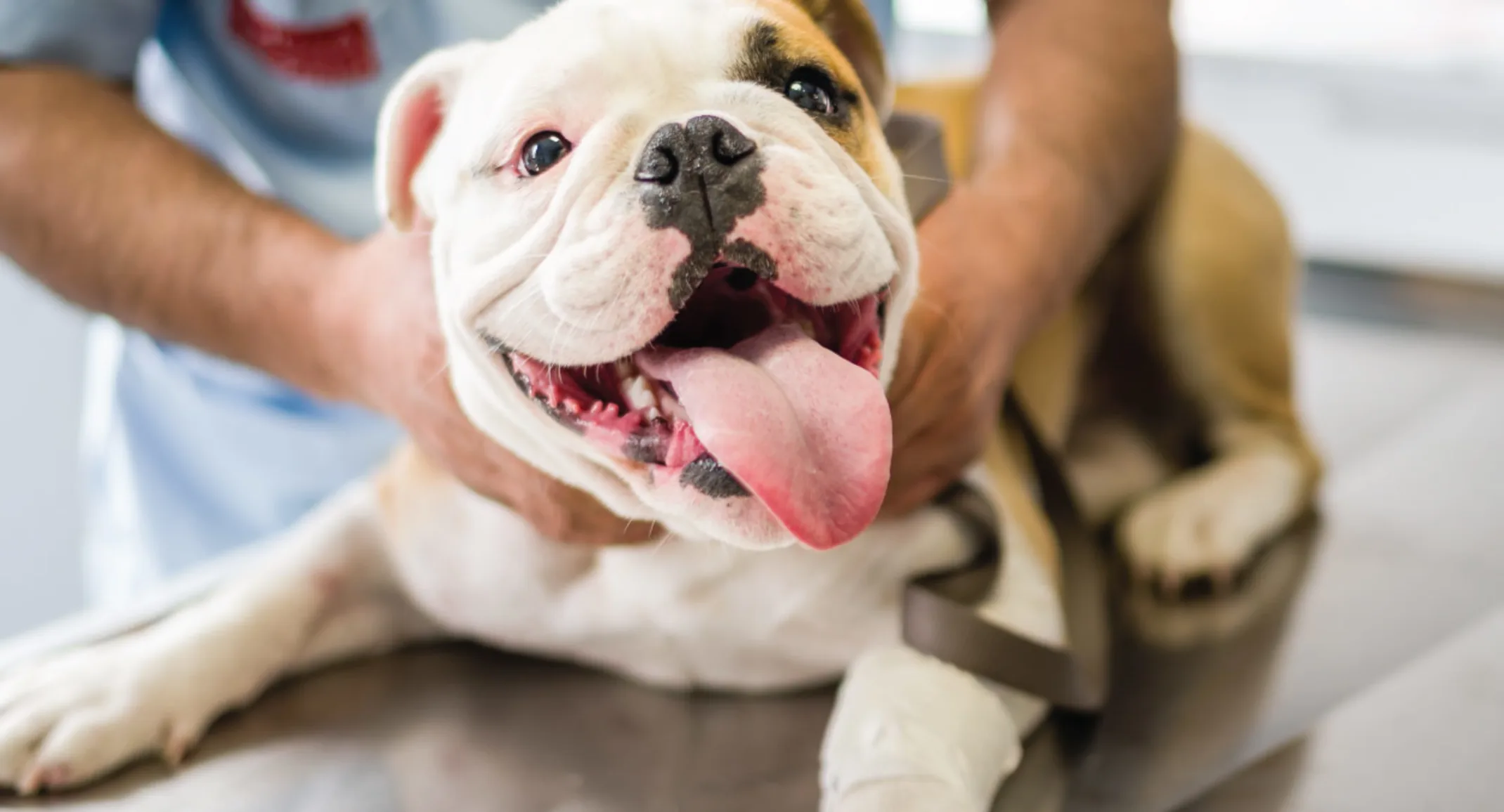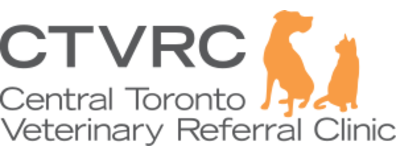Understanding Brachycephalic Obstructive Airway Syndrome: What Pet Owners Need to Know
Internal Medicine Update

What is Brachycephalic Obstructive Airway Syndrome?
Brachy means shortened and cephalic means head. The shortened bones of a bracycephalic dog’s face gives them a pushed in appearance but what we see on the outside is also what is happening inside the head. This altered anatomy obstructs normal airflow and causes breathing difficulties to almost all brachycephalic breeds to some degree.
Brachycephalic breeds include Bulldogs (French and English), Boxer Dogs, Boston Terriers, Pekingese, Chinese Shar-Pei, Pugs, Lhasa Apsos, Shih Tzus, and Bull Mastiffs, to name a few. Cats can also be affected, with breeds including Persians, Himalayans, Burmese, and British Shorthairs.
BOAS is caused by a group of upper airway abnormalities that are often seen together:
Stenotic nares: Narrow nostrils that restrict airflow.
Aberrant nasopharyngeal turbinates: Bony ridges that obstruct airflow when they extend into the pharynx.
Elongated soft palate: A long and thick soft palate that intermittently blocks the windpipe. During an inward breath, the soft palate is also “inhaled,” causing a blockage – this is what causes snoring.
Hypoplastic trachea: A narrower-than-normal trachea (windpipe).
Macroglossia: An enlarged tongue that hinders airflow.
Everted laryngeal saccules: Tissue pulled into the airway due to increased breathing effort.
Laryngeal collapse: Structural failure of the larynx due to chronic stress.
These abnormalities can make breathing difficult, especially in hot weather, during excitement, or after exercise. Many dogs are affected by more than one issue.
Signs of BOAS to Watch For
Loud, laboured breathing
Open-mouth breathing or distress
Snoring or snorting sounds
Exercise intolerance
Gagging or retching
In severe cases or under certain circumstances (e.g. hot weather), animals with BOAS can turn blue (cyanosis), collapse, and even die.
These symptoms can range from mild to severe—and in emergency cases, they may become life-threatening very quickly.
Emergency Treatment in the ER
If your pet is in respiratory distress, immediate veterinary attention is critical. Here's what happens once your pet arrives at the ER:
1. Stabilization First
The priority is to get your pet breathing more comfortably:
Oxygen therapy via mask, nasal cannula, or oxygen cage
Sedation to reduce anxiety and oxygen demand
Cooling is important, especially if overheating triggered the episode.
2. Airway Management
If oxygen and sedation aren’t enough, more aggressive interventions may be needed:
Intubation (placing a tube into the windpipe) allows controlled breathing under anaesthesia.
Emergency tracheostomy (a temporary hole in the windpipe) may be required if the upper airway is severely obstructed.
Emergency palatopexy (temporary tacking of the soft palate to the roof of the mouth) may be helpful to keep a patient stable until corrective surgery can be performed.
Surgery is the treatment of choice to address the underlying anatomical issues and is best pursused at a young age.
The pathway to surgery:
The Consultation
Here we will discuss if your dog is affected by BOAS and if they are a good candidate for surgery.
Patient assessment
CT scan or radiographs to assess the soft palate, trachea, and lungs
Evaluate for hypoplastic trachea and aspiration pneumonia
Upper airway exam to assess laryngeal collapse (graded 0–3)
3. Surgery
Typically includes 2–3 procedures to address the nostrils, soft palate, and laryngeal saccules. Some cases may require additional procedures for nasal turbinates.
Surgery aims to improve quality of life. There is no cure for BOAS but we can make patients more comfortable and extend their life if treatment is sought early.
4. Recovery
Monitoring in an ER/ICU setting
Possible temporary breathing tube for severe swelling
About 10% of patients need assisted breathing post-operatively, especially older, overweight dogs, or those with advanced disease
Post-operatively you need to ensure your dog is kept calm, avoid barking or panting. A cool air-conditioned room is preferable.
How successful is surgery?
The earlier the intervention, the better the outcome. Early correction can prevent the onset or worsening of conditions like laryngeal collapse. Laryngeal collapse occurs with time when the cartilages of the airway become soft and begin to sag. This aspect of the disease is progressive and there is no cure.
What is the prognosis for a dog with Brachycephalic Airway Syndrome?
Prognosis depends on:
Which anatomical issues are present and their severity
Age at which surgery is performed – dogs under 5 have a better prognosis
Presence of other health conditions (e.g., allergic airway disease)
Dogs under two with fewer abnormalities generally fare best. Even with complex cases, proper management greatly enhances quality of life.
Prevention & Long-Term Care
You can reduce the risk of a BOAS crisis by:
Avoiding heat and overexertion
Using a harness instead of a collar
Keeping your pet at a healthy weight
Offering food and water in raised bowls
Talking with your vet early about potential corrective surgery – these surgeries can often be performed at the time of neutering
Final Thoughts
While many brachycephalic pets live happy lives, BOAS is a serious condition that requires vigilance. Knowing the signs and being prepared to act quickly in an emergency can save your pet’s life. If your snub-nosed friend is struggling to breathe, don’t wait—seek veterinary care immediately.
Have questions about your pet’s breathing or whether they might be a surgical candidate? Your vet is your best resource. Don’t hesitate to ask!
